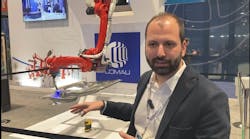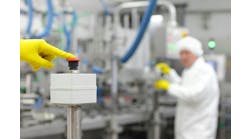This article originally appeared in "Before Ripping Out That Old Automation System, Try Getting it Back in Shape First."
AeroSpec in Chandler, Arizona, designs and builds a variety of custom automated equipment for the medical, semiconductor, automotive and defense industries. David Perkon, vice president, says he's seen many problems with legacy control systems.
"It's not uncommon to have firmware and software driver issues with legacy hardware and software," he says. "Working with a dated operating system or updating the operating system can cause issues with I/O drivers, application software and PC-based operator interfaces. A programmable controller's firmware might not be compatible with rack-mounted motion control cards and other smart modules."
Roadblocks to upgrading are many, he says. "There are the ‘It costs too much money,' or ‘I can't afford the downtime' customers. With many customers, not updating legacy hardware and software is more of a culture than a time-and-money issue. It's the ‘It's running fine, don't mess with it' attitude. All that sounds reasonable until the reality of failures brings production to a halt. Many customers just don't want to spend the money or are afraid to upgrade until they absolutely have to."
AeroSpec designed and built this and other stations on a high-speed, thin-film-solar assembly line. This station singulates, orients and tests diodes before they’re adaptively placed and welded on the thin-film product by dual-vision guided robots.
AeroSpec is happy to retrofit new controls hardware to existing equipment. "We recently updated the automation system for a large medical-device manufacturer. The equipment ran slow and had significant quality and productivity issues. It was a machine the customer had been fixing for years."
Significant machine downtime was occurring because of product breakage, machine jams and alignment issues. A team of three maintenance technicians were required to support the 10 machines every shift. Although the technicians kept the equipment running, the root cause of the problems—the controls hardware—was never addressed.
AeroSpec performed a detailed equipment study and found the legacy control system and software were limiting production. The machine controller and motion control hardware were upgraded.
"Replacing the motion controller with a Rockwell Automation CompactLogix controller and Kinetix multi-axis servodrives greatly improved machine performance," Perkon reports. "The new hardware fit nicely in the existing control enclosure, and a new PanelView HMI enabled the addition of machine status, fault display, manual functions and setpoint adjustment screens."
The upgraded hardware allowed programming of a new machine sequence with a creative motion profile. "In the end, we tripled the speed of the equipment and significantly reduced scrap," Perkon beams. "The control hardware and software upgrade also helped highlight other areas where the equipment could be optimized. It's simple math. The new hardware and software quickly paid for themselves."





